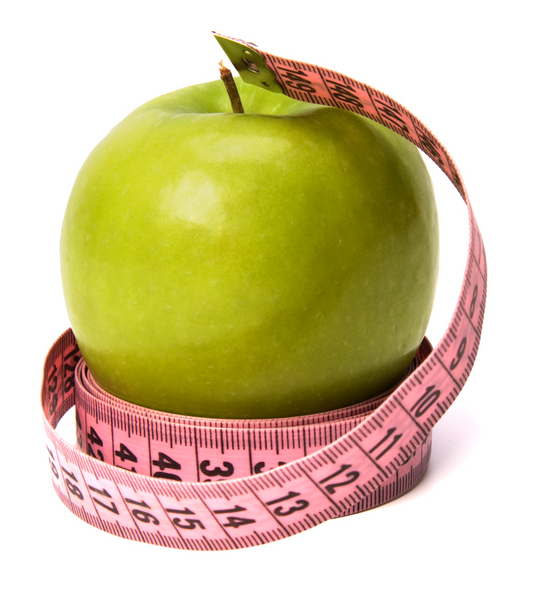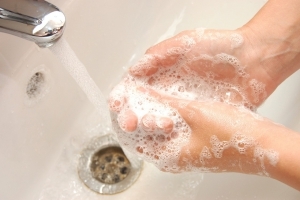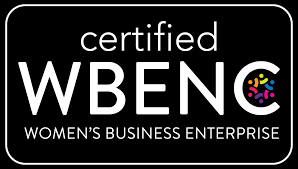Written by National Wellness Institute

Wellness in 10 this month is focused on our eating habits at work, which – for many people – have room for improvement. The crux of many of our at-work nutritional challenges stem from the fact that we’re working with limited resources like time, availability, and room for eating well, but we’re still taking in one third (or more) of our calories during the week at work!
Here are 10 ways to improve your eating habits at work, and the habits of your staff, coworkers, family and friends!
1. Brown Bag It.
Eating out every day, or even most days, may prove to be convenient, but actually takes away a lot of your lunchtime choices. By bringing your own lunch to work, you’re taking control of what – and how much – you’re eating, and instead of being limited to one of the few 30-minute-or-less restaurants near your office, you have the ability to choose from anything you can fit in the refrigerator to prepare for lunch.
2. Bring Greens.
Late summer and fall is when the harvest happens! Take advantage of the huge array of fruits and vegetables that are available to you at this time of year! If you need ideas for how to eat veggies for lunch at work, just look up “salad in a jar,” online, and you’ll get tons of links like this one. Your options are only limited to the selection you find at your local farmers market or grocer.
3. Cut the sugar.
Researchers say sugar is as addictive as cocaine, so it can be hard to turn the cravings off. Taking small steps to reduce sugar intake can have a big impact on your overall health, though. Try reducing or removing the sugar from your morning coffee. You can replace the sugar with spices like cinnamon or cardamom to stave off some of the bitterness. You can also try switching over to the seemingly endless varieties of tea to keep things interesting.
4. Daily donut? Daily do-not.
Oh boy are donuts delicious. We all know it. We also know they’re not doing us any favors health-wise. While it probably won’t kill you to indulge in a donut from time to time, a daily sweet-roll, cruller, or cinnamon bun can weigh in at a full sixth or more of your daily recommended calorie intake. If your morning routine normally includes a donut, try switching it up with something with similar flavors, like granola with vanilla yogurt. You’ll get the sweet flavor you’re after while being able to control the portion size. Or try switching out a daily box of donuts at the office with a bunch of bananas or a bag of apples.
5. Hydrate your hunger.
Many of us have a hard time distinguishing between hunger and thirst. That same segment of us is also probably not drinking enough water. Next time you’re feeling hungry, try drinking a big cup of water and see if it goes away.
6. Keep your distance.
Keeping snack food in your desk drawer is convenient. That’s not a good thing. Don’t sabotage your nutrition by keeping snack food available where you can munch at it whenever you get an urge. By removing it from your immediate vicinity, you’ll make food choices mindfully.
7. Plan a snack break.
Nutrition at work isn’t all about denying yourself the things that you want, it’s about providing the things your body needs. Sometimes what your body needs is a little something to keep you going. By planning a snack break (which could easily coincide with your walking break), you give yourself something to look forward to, you get something to munch on, and you get to add something healthy to your day!
8. Count it out.
Many people have never really learned what a serving size is for a variety of different foods. By taking some time to familiarize yourself with the serving sizes of various foods, you’ll start to learn how much you should be eating. With a little practice, you’ll be able to ‘eyeball’ serving sizes without any extra effort!
9. Distract yourself.
Have you ever noticed how you never seem to get hungry when you’re in the middle of an interesting project, but while you’re watching a movie the popcorn will disappear before you realize it? Working in a flow state can curb your mindless munching. By making mindful choices to work toward flow state, you’re not only improving your office nutrition, but you’ll increase your overall happiness, too!
10. Get group support.
Being left out stinks. That’s why a lot of us go out to eat with a crew of coworkers every day instead of packing a lunch to work. Try recruiting a few people to eat lunch with who may have similar nutrition goals as you. You may be surprised at who’s looking to make a positive change in their overall wellness!


 The first day of summer is June 21! For many, this is the first day of their favorite three months of the year. In the spirit of summertime fun, here are 10 ways you can celebrate the beginning of Summer:
The first day of summer is June 21! For many, this is the first day of their favorite three months of the year. In the spirit of summertime fun, here are 10 ways you can celebrate the beginning of Summer: The results of a study released by Tufts University in early April 2015 may make understanding and implementing long-term weight control easier.
The results of a study released by Tufts University in early April 2015 may make understanding and implementing long-term weight control easier.


 New research (January 2015) released by the
New research (January 2015) released by the 











